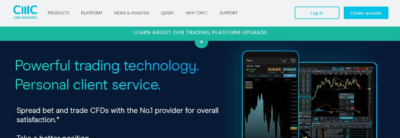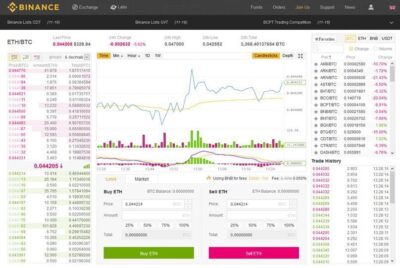What is Contango Furures Trading Explained
Contents
This practice was common before 1930, but came to be used less and less, particularly after options were reintroduced in 1958. It was prevalent in some exchanges such as Bombay Stock Exchange where it is still referred to as Badla. Futures trading based on defined lot sizes and fixed settlement dates has taken over in BSE to replace the forward trade, which involved flexible contracts.
Over the long run, the actions of market participants rebalancing their portfolios can impact asset prices. When futures contracts are bought, the increase in demand causes an increase in short term prices. But now, with the market flooded with future supply, prices consequently come down, effectively removing contango from the market. This can naturally lead to backwardation, a situation that many financial analysts and experts believe to be the norm in commodities trading. Backwardation is when futures prices are lower than current spot prices. This is a common scenario for perishable goods, and it leads to more demand in the future, less supply, and consequently higher prices.
A market that is steeply backwardated—i.e., one where there is a very steep premium for material available for immediate delivery—often indicates a perception of a current shortage in the underlying commodity. By the same token, a market that is deeply in contango may indicate a perception of a current supply surplus in the commodity. Contango is when the futures price is above the expected future spot price.
Using Contango May Not Be for You
In general, backwardation can be the result of current supply and demand factors. It may be signaling that investors are expecting asset prices to fall over time. This graph depicts how the price of a single forward contract will typically behave through time in relation to the expected future price at any point in time. A futures contract in contango will normally decrease in value until it equals the spot price of the underlying commodity at maturity. Producers have other reasons to pay more for futures than the spot price, thus creating contango. Producers make commodity purchases as needed based on their inventory.

During contango, the idea will be to go long on futures contracts as the expectation is that prices will continue drifting higher. But as maturity nears, the idea will be to go short on futures contracts as forward prices converge downwards to meet the spot prices. When maturity is still far away, speculators can go short as future prices are expected to edge lower. But as maturity nears, the idea will be to go long as forward prices converge upwards to meet the spot prices. The conclusion is that both contango and backwardation simply reflect the opposite sides of the same coin. They also both offer exciting opportunities for both short term and medium-term speculation.
Besides his extensive derivative trading expertise, Adam is an expert in economics and behavioral finance. Adam received his master’s in economics from The New School for Social Research and his Ph.D. from the University of Wisconsin-Madison in sociology. He is a CFA charterholder as well as holding FINRA Series 7, 55 & 63 licenses.
Backwardation exists for various reasons, including short-term events that can cause the spot price to rise above future prices. For example, if a major drought causes wheat crops to suffer then the spot price may spike up above the future prices, when growing conditions are expected to be normal again. However, as crude and gasoline prices continued to rise between 2007 and 2008 this practice became so contentious that in June 2008 the Commodity Futures Trading Commission, the Federal Reserve, and the U.S. Securities and Exchange Commission decided to create task forces to investigate whether this took place. A few fundamental factors such as the cost to carry a physical asset or finance a financial asset will inform the supply/demand for the commodity.
A Must-ReadeBook for Traders
The convenience yield is the benefit or implied return on holding commodities physically rather than future contracts. Convenience yield exists when carry costs are low and it is beneficial for participants to hold large inventories for the long run. The convenience yield will be low when warehouse stock levels are high and it will be high when warehouse stock levels are low. Backwardation can also occur when producers want to cushion themselves from the price uncertainties in the financial markets. This is the scenario that famed economist Keynes described in his normal backwardation theory. In all futures market scenarios, the futures prices will usually converge toward the spot prices as the contracts approach expiration.
But for non-perishable goods, with high carrying costs, the consensus is that they offer a great opportunity for buying call options in the futures market. The reason why traders or investors watch contango and backwardation is because of the relationship it details between futures prices and spot prices. This is important information for speculators because it will determine whether carry trade forex they go long or short at any given time, based on where they expect future prices to go. The definition of contango is a situation where market participants are willing to pay a premium for the future prices of a commodity. They may not desire to pay insurance for the entire period, storage fees, or risk damage, theft or any other unexpected price fluctuations in the market.

As futures contracts near expiration, this type of arbitrage increases. The spot and futures price actually converge as expiration approaches due to arbitrage, and contango diminishes. Contango describes an upward sloping curve where the prices for future delivery are higher than the spot price (e.g., the price of gold delivered in 1 year is $1,400/oz and the spot price is $1,200/oz).
However, that strategy only works if actual prices in the future exceed futures prices. Contango refers to a situation where the futures price of an underlying commodity is higher than its current spot price. calculated bets Contango is considered a bullish sign because the market expects that the price of the underlying commodity will rise in the future and as such, participants are willing to pay a premium for it now.
As mentioned, the cost of carry is one common reason for buying commodities futures. For example, using your crystal ball, if you and your counterparty could both foresee the spot price in crude oil would be $80 in one year, you would rationally settle on an $80 futures price. Anything above or below would represent a loss for one of the trading contract pairs. The most significant disadvantage of contango comes from automatically rolling forward contracts, which is a common strategy for commodity ETFs. Investors who buy commodity contracts when markets are in contango tend to lose some money when the futures contracts expire higher than the spot price. A market is “in backwardation” when the futures price is below the spot price for a particular asset.
This supply/demand interplay ultimately determines the shape of the futures curve. An inverted market occurs when the near-maturity futures contracts are higher in price than far-maturity futures contracts of the same type. A futures market is normal if futures prices are higher at longer maturities and inverted if futures prices are lower at distant maturities. Fortunately, the loss caused by contango is limited to commodity ETFs that use futures contracts, such as oil ETFs.
Contango: Understanding Advanced Commodities Trading
For perishable commodities, price differences between near and far delivery are not a contango. Different delivery dates are in effect entirely different commodities in this case, since fresh eggs today will not still be fresh in 6 months’ time, 90-day treasury bills will have matured, etc. As we approach contract maturity—we might be long or short the futures contract—the futures price must move or converge toward the spot price. That’s because, on the maturity date, the futures price must equal the spot price. If they don’t converge on maturity, anybody could make free money with an easy arbitrage.
In this article, we’ll lay out the differences between contango and backwardation and show you how to avoid serious losses. Vikki Velasquez is a researcher and writer who has managed, coordinated, and directed various community and nonprofit organizations. She has conducted in-depth research on social and economic issues and has also revised and edited educational materials for the Greater Richmond area.
- As we approach contract maturity—we might be long or short the futures contract—the futures price must move or converge toward the spot price.
- When futures contracts are bought, the increase in demand causes an increase in short term prices.
- In all futures market scenarios, the futures prices will usually converge toward the spot prices as the contracts approach expiration.
- The USO ETF also failed to replicate crude oil’s spot price performance.
- Samantha Silberstein is a Certified Financial Planner, FINRA Series 7 and 63 licensed holder, State of California life, accident, and health insurance licensed agent, and CFA.
“In broad terms, backwardation reflects the majority market view that spot prices will move down, and contango that they will move up. Both situations allow speculators (non-commercial traders) to earn a profit.” A carrying charge market is a futures market where long-maturity contracts have higher future prices, relative to current spot prices. Futures prices above the spot price can be a signal of higher prices in the future, particularly when inflation is high. Speculators may buy more of the commodity experiencing contango in an attempt to profit from higher expected prices in the future. They might be able to make even more money by buying futures contracts.
The difference is normal/inverted refers to the shape of the curve as we take a snapshot in time. In the case of a physical asset, there may be some benefit to owning the asset called the convenience yield. In the case of a financial asset, ownership may confer a dividend to the owner. At times it may be profitable to hold the tangible commodity rather than holding derivative products in the asset. Contango and normal backwardation refer to the pattern of prices over time, specifically if the price of the contract is rising or falling.
Economic theory
It would simply be disastrous if these companies would be buying oil at their market prices when required. The purchase of futures contracts helps the companies to plan for stable prices for cryptocurrency brokerage firm a guaranteed period. If there is a near-term shortage, the price comparison breaks down and contango may be reduced or perhaps even be reversed altogether into a state called backwardation.
The spot price versus the futures price may be a factor in their inventory management. However, they will generally follow the spot and futures prices while seeking to achieve the best cost efficiency. Some producers may believe that the spot price will rise rather than fall over time. Contango is normal for a non-perishable commodity that has a cost of carry. Such costs include warehousing fees and interest forgone on money tied up (or the time-value-of money, etc.), less income from leasing out the commodity if possible (e.g. gold).
Buy or sell at a future date
Contango is common in the gold industry, where the commodity is non-perishable and there are storage costs. Because the futures price must converge on the expected future spot price, contango implies futures prices are falling over time as new information brings them into line with the expected future spot price. When contracts are further away from expiration, they are more speculative. There are a few reasons for an investor to lock in a higher futures price.
Minimal price impact
It is important to note though that rolling also comes with additional trading costs, both in the value of the futures contract and rolling charges. The above price fluctuations explain why market participants are more than willing to engage in contango in the market. It provides a unique opportunity to protect themselves from the unpredictable commodity price swings in the market that can severely puncture their bottom line. For instance, it is common for airline companies to routinely purchase oil futures to bring stability in both their business model as well as their returns.
The contango should not exceed the cost of carry, because producers and consumers can compare the futures contract price against the spot price plus storage, and choose the better one. Arbitrageurs can sell one and buy the other for a theoretically risk-free profit (see rational pricing—futures). The EU describes the two groups of players in the commodity futures market, hedgers or arbitrageurs/speculators (non-commercial investors).








